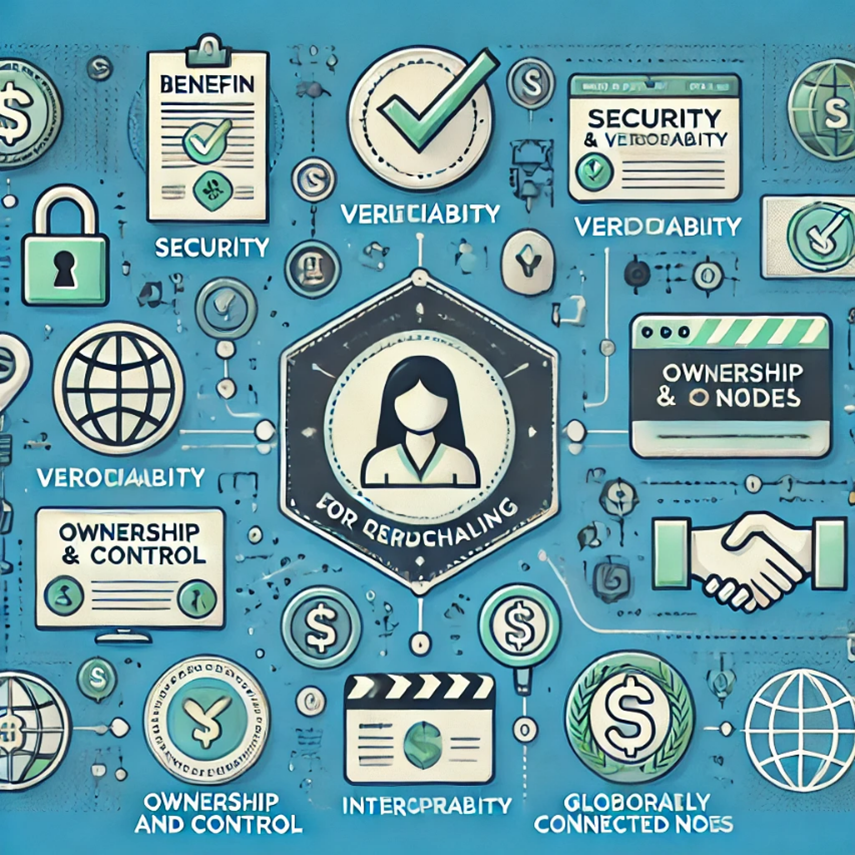Using blockchain for secure and verifiable credentialing

Using blockchain for secure and verifiable credentialing
by Maximilian 04:25pm Jan 23, 2025

Using blockchain for secure and verifiable credentialing is an innovative approach that leverages the core properties of blockchain—immutability, decentralization, and transparency. This system can revolutionize how educational institutions, employers, and other entities issue, manage, and verify credentials, such as academic degrees, certifications, and professional licenses.
Key Benefits of Blockchain for Credentialing
Tamper-Proof Records: Blockchain ensures that once a credential is issued, it cannot be altered or forged. This immutability provides trust and integrity to the credentialing process.
Decentralized Verification: Verifiers (employers, institutions) can confirm the authenticity of credentials directly on the blockchain without relying on intermediaries or contacting the issuing body.
Self-Sovereign Identity: Blockchain allows individuals to have control over their credentials. They can securely share their credentials with others, maintaining privacy and autonomy.
Enhanced Security: Blockchain’s cryptographic mechanisms protect against unauthorized access or tampering of data, reducing the risk of fraud.
Efficiency: Traditional verification processes are often slow and manual. Blockchain-based systems enable instant verification, saving time and resources.
Transparency and Traceability: Blockchain provides a transparent record of credential issuance, making it easy to trace the history and origin of a credential.

How Blockchain-Based Credentialing Works
Credential Issuance:
An issuer (e.g., a university) creates a digital credential.
The credential is hashed (converted into a unique string of characters) and stored on the blockchain.
The issuer provides the individual with a digital version of the credential.
Storage:
Individuals can store their credentials in digital wallets or decentralized identity platforms.
Verification:
A verifier (e.g., an employer) requests proof of a credential.
The individual shares the credential’s blockchain-stored hash.
The verifier checks the blockchain for the matching hash to confirm authenticity.
Popular Use Cases
Academic Degrees and Diplomas: Universities issuing blockchain-verified diplomas to prevent degree fraud.
Professional Certifications: Organizations ensuring certifications are easily verifiable and up-to-date.
Identity Verification: Governments and businesses using blockchain for reliable ID and background checks.
Skills Portfolios: Freelancers and professionals showcasing verifiable proof of skills and work history.

Challenges and Considerations
Scalability: Large-scale adoption requires blockchains capable of handling significant transaction volumes.
Interoperability: Ensuring compatibility between different blockchain systems is critical for widespread adoption.
Data Privacy: Balancing transparency with privacy laws (e.g., GDPR) requires careful design.
Adoption Barriers: Resistance to new technologies and lack of standardization may hinder implementation.
Tools and Platforms
Some prominent platforms and tools for blockchain-based credentialing include:
Block certs: An open standard for creating, issuing, and verifying blockchain-based certificates.
Learning Machine: Focused on education credentials.
Hyperledger: Enterprise-grade blockchain frameworks that can be used for credentialing systems.






